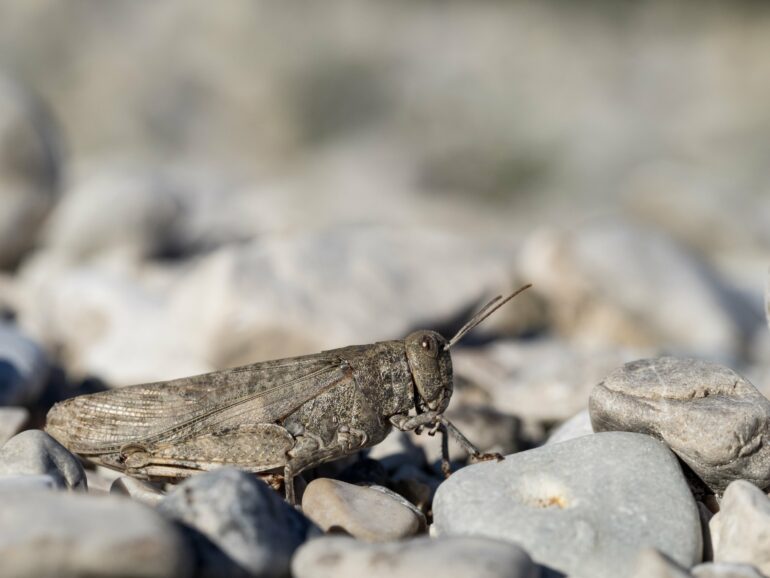The largest genome of any insect, seven times the size of the human genome, was recently discovered in a grasshopper. In a study published in PLOS ONE, researchers from the German Leibniz Institute for the Analysis of Biodiversity Change (LIB) and the Czech Academy of Sciences prove wrong the idea of insect genomes being comparatively small and less complex.
The speckled buzzing grasshopper (Bryodemella tuberculata) is among the most conspicuous grasshoppers of Central Europe. At the same time, it is among the rarest, all but extinct except for a small number of populations on the banks of rivers in the Alps. These threatened habitats have been formed by thousands of years of constant change through the natural dynamics of the rivers.
“Possibly, this adaptation to variable environmental conditions has fostered genetic diversity and led to exceptional genome sizes,” hypothesizes Oliver Hawlitschek, head of the Hamburg LIB genetics lab. “At the same time, comparing with humans, we see that genome size is not necessarily related to the level of complexity of an organism.”
This study is the most recent of a series of publications on the evolution of genome sizes in insects in the context of their evolutionary and biogeographic history. None of these works has answered the question of why, among all insects, the genomes of some species of grasshoppers are exceptionally large. Most insect genomes are much smaller, such as that of the fruit fly, whose size is not more than a sixth of that of the human genome.

The speckled buzzing grasshopper (Bryodemella tuberculata) is one of the rarest grasshopper species in Central Europe today. Its last refuge in this country is in the Alps, in the upper reaches of the Isar and Lech rivers. © Jakob Andreä
The size of genomes varies considerably among different groups of animals, sometimes even within groups. Since the complete genome must be duplicated during every cell division, scientists are searching for the reasons behind this variability. They are trying to understand the architecture and content of genomes, but this is still a long way to go. Data on genome sizes is available for only 1,345 out of the more than a million known species of insects. All the largest genomes have been found in grasshoppers and crickets.
To better understand the variation of genome size in grasshoppers and its evolutionary history, researchers measured the genomes of 50 species using flow cytometry, investigating variability in related species. They found the largest genome in the speckled buzzing grasshopper (Bryodemella tuberculata), replacing the previous record holder, the Asian desert cricket (Deracantha onos).
Oliver Hawlitschek regards more detailed sequence-based genomic analyses as a way of learning more about the evolutionary mechanisms determining the sizes of genomes. “I am confident that studying these extremes will also provide us with many insights about the function of our human genomes.”
More information:
Oliver Hawlitschek et al, New estimates of genome size in Orthoptera and their evolutionary implications, PLOS ONE (2023). DOI: 10.1371/journal.pone.0275551
Provided by
Leibniz-Institut zur Analyse des Biodiversitätswandels
Citation:
Scientists discover giant insect genome (2023, March 16)
